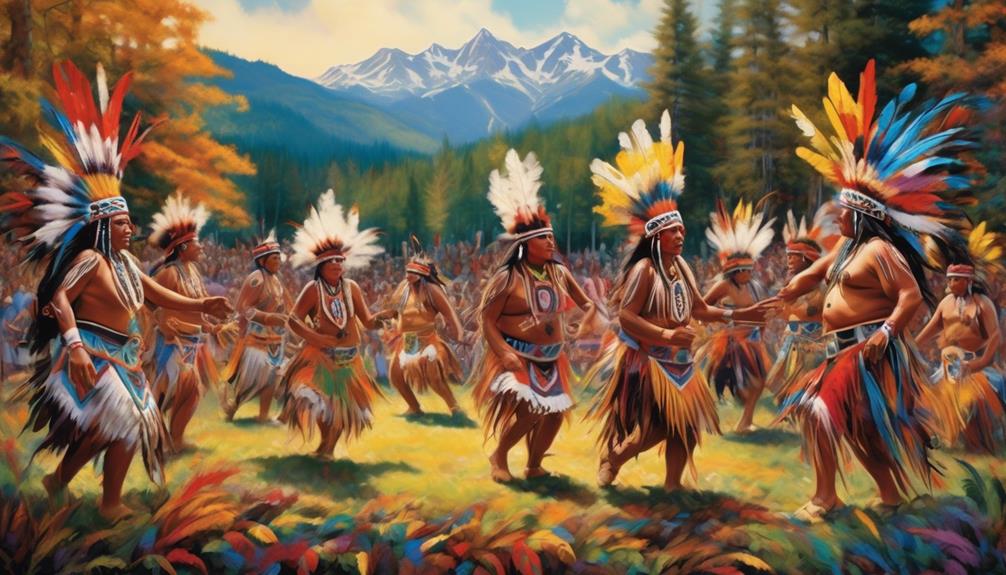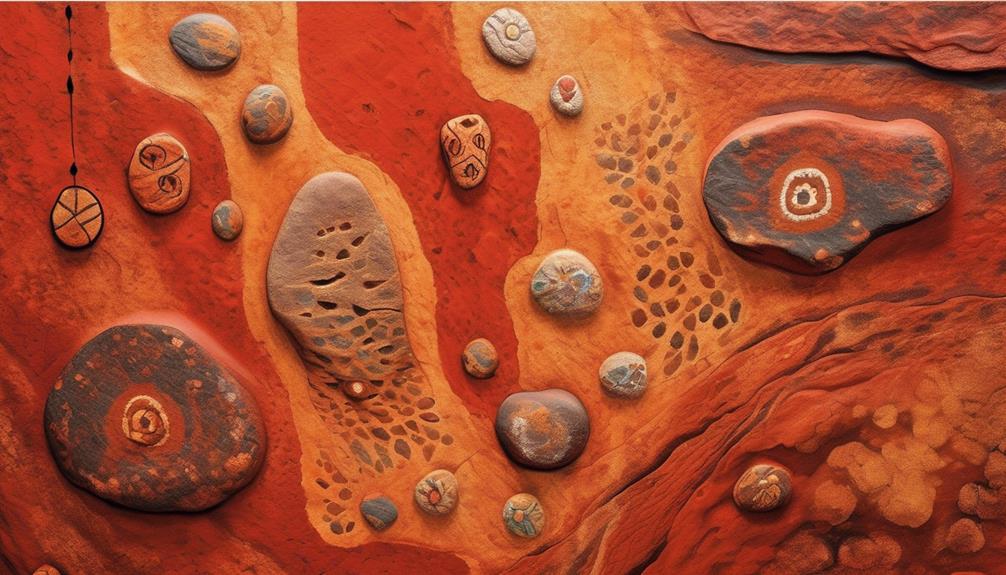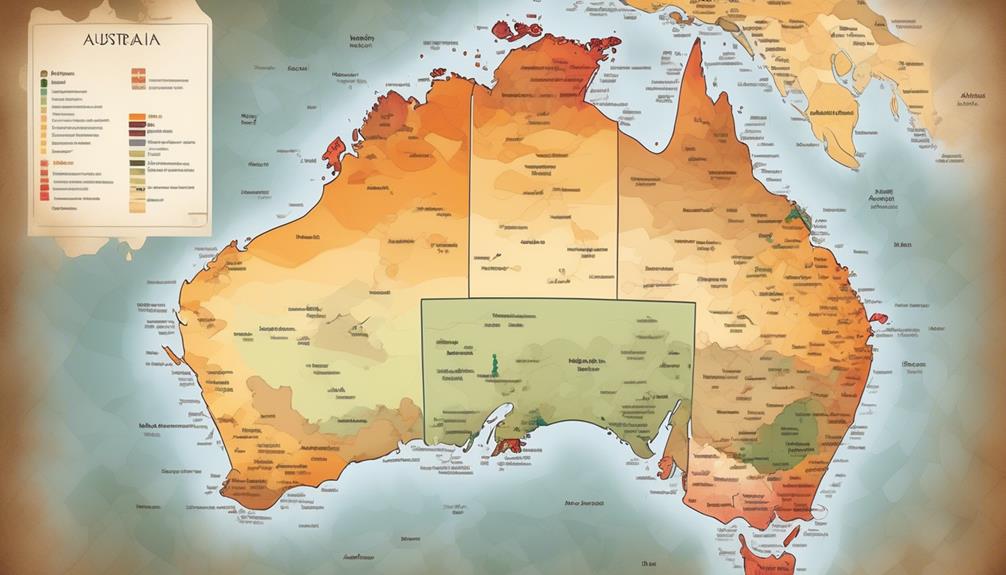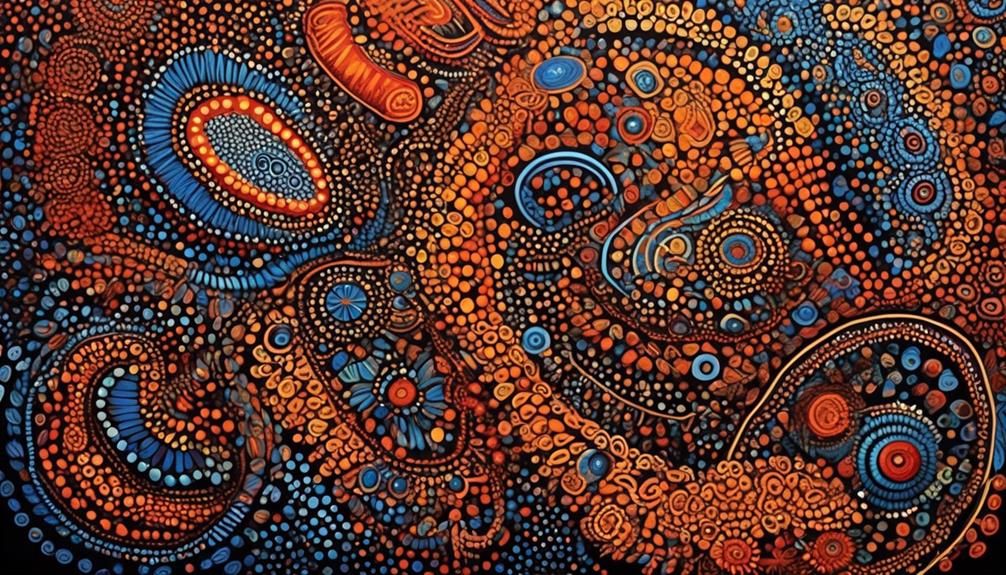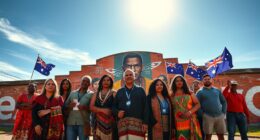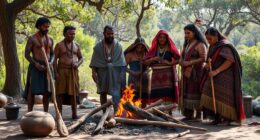As Canadians, the maple leaf represents our national identity, but it’s crucial to recognize that the roots of our country go much deeper than just a symbol.
The Indigenous peoples of Canada have a rich and complex history that has shaped the land and its people in profound ways. From their traditional practices and languages to their ongoing struggle for land rights and treaties, the Indigenous communities have been integral to the fabric of Canada.
There is much to explore and understand about their cultural celebrations, environmental stewardship, and resilience in the face of adversity.
The ongoing efforts towards reconciliation and the future perspectives on Indigenous issues are equally significant and warrant our attention.
Key Takeaways
- Indigenous resistance has been a constant theme throughout history, as European settlers brought significant changes to the lives of Indigenous peoples.
- The Indian Act of 1876 restricted Indigenous practices and attempted assimilation, which was further perpetuated by the establishment of residential schools.
- Indigenous peoples have inherent rights as recognized by the United Nations and the Constitution Act of 1982 affirms Aboriginal rights, including land and resource rights.
- Preserving and revitalizing traditional practices, languages, and cultural celebrations are crucial for maintaining Indigenous identity and connection to the land, while education reform and land restitution are essential for empowerment and reconciliation.
Historical Background
We have long been aware of the rich and complex history of the Indigenous people of Canada, which encompasses a multitude of experiences and perspectives. Indigenous resistance has been a constant theme throughout history, as Indigenous communities have fought to maintain their cultures, land, and rights in the face of colonial impact.
The arrival of European settlers brought significant changes to the lives of Indigenous peoples, leading to the displacement of communities, loss of traditional territories, and the imposition of foreign systems of governance. Colonial impact, marked by the imposition of discriminatory laws and policies, led to a systematic erosion of Indigenous autonomy and self-governance.
The Indian Act of 1876, for example, restricted Indigenous practices, controlled land management, and attempted to assimilate Indigenous people into Euro-Canadian society. This had devastating effects on Indigenous communities, resulting in the loss of language, culture, and traditional knowledge. Despite these oppressive measures, Indigenous resistance continued as communities sought to preserve their identities and resist assimilation.
Throughout history, Indigenous resistance has taken various forms, including political activism, legal battles, and cultural revitalization movements. The resilience and determination of Indigenous peoples have been instrumental in challenging oppressive systems and advocating for their rights.
It's essential to acknowledge the ongoing impact of colonialism on Indigenous communities and work towards decolonization and reconciliation. By amplifying Indigenous voices and supporting their self-determination, we can contribute to a more just and equitable future for all.
Traditional Practices
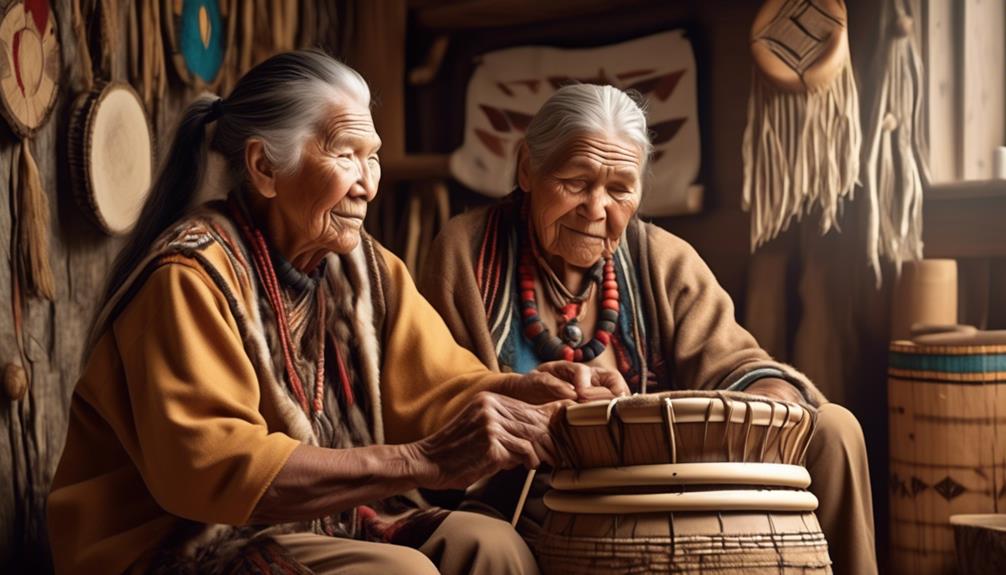
The impact of colonialism on Indigenous communities has influenced their traditional practices, which encompass a rich tapestry of cultural knowledge and rituals passed down through generations. Indigenous agriculture is deeply rooted in sustainable practices that have sustained our communities for centuries. Our traditional farming methods, such as the Three Sisters planting technique, demonstrate a profound understanding of the land and a commitment to sustainability. These practices not only provide nourishment but also foster a harmonious relationship with the earth, reflecting our deep respect for the environment.
Ritual ceremonies play a vital role in maintaining our spiritual connection to the land and our ancestors. These ceremonies are sacred and are conducted with the utmost reverence, strengthening our bonds with the natural world and carrying forward the wisdom of our elders. They aren't mere performances but are integral to our identity, spirituality, and cultural continuity.
Furthermore, the traditional practices of Indigenous communities aren't static; they evolve and adapt while remaining true to their core values. As we navigate the complexities of the modern world, we strive to preserve and revitalize our traditional practices, recognizing their significance in shaping our collective identity and guiding our interactions with the environment.
Indigenous Languages
Indigenous languages hold a profound significance as carriers of our cultural heritage and knowledge, embodying the essence of our identity and connection to our ancestral lands. The preservation and revitalization of Indigenous languages are crucial for reclaiming our cultural autonomy and strengthening our communities. Our languages encapsulate the wisdom of our ancestors, the stories of our people, and the intimate relationship we've with the natural world around us.
The preservation of our languages is an act of resistance against historical attempts to erase our identity and assimilate us into dominant cultures.
Revitalizing our languages involves creating spaces for intergenerational transmission, providing resources for language education, and empowering our communities to use and celebrate our languages in everyday life. It's about weaving our languages into every aspect of our existence, from education to governance, from art to spirituality. The revitalization of our languages is an affirmation of our right to exist as distinct peoples with unique ways of knowing and being.
The preservation and revitalization of Indigenous languages aren't just about words; they're about revitalizing entire worldviews, knowledge systems, and ways of being. It's about embracing the richness of linguistic diversity and recognizing the intrinsic value of each language in shaping our collective humanity. Our languages are the vessels of our cultural resilience, and through their preservation and revitalization, we reclaim our voices, our stories, and our future.
Land Rights and Treaties
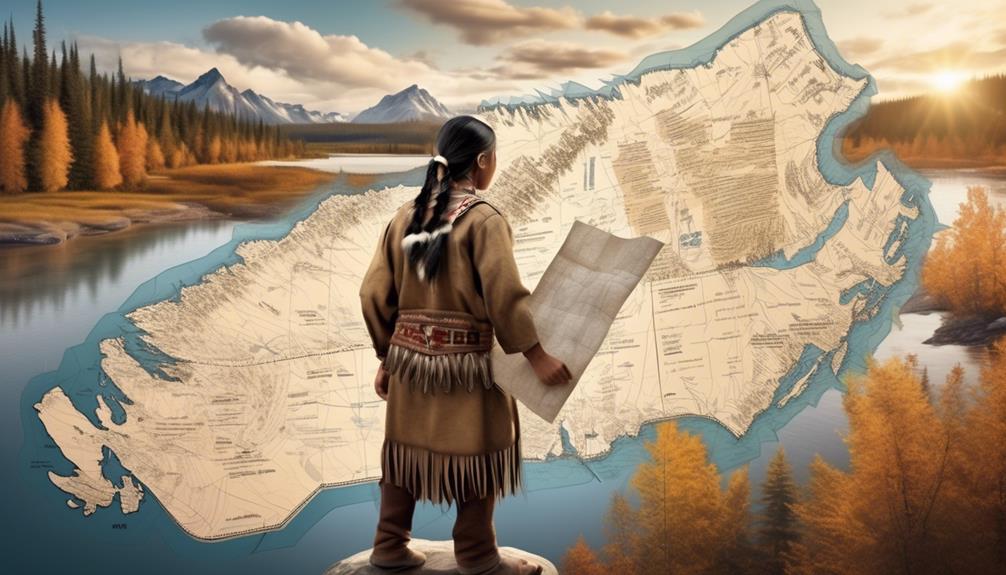
We must acknowledge the importance of Treaty Obligations, the impact of Historical Land Loss, and the complexities of Current Land Disputes for Indigenous Peoples in Canada.
These aren't just historical issues, but ongoing struggles that affect Indigenous communities today. Understanding the significance of these points is crucial in our efforts to support and advocate for Indigenous land rights and treaty rights.
Treaty Obligations
Through a series of historical treaties, Indigenous peoples in Canada have established enduring land rights and obligations with the government. These treaties aren't simply relics of the past; they form the foundation of our ongoing relationship with the Canadian government. They're living agreements that continue to shape our present and future.
Our treaty rights include access to healthcare services and the preservation of traditional healing practices. It's essential that these rights are respected and upheld, as they're integral to our well-being and cultural autonomy.
Access to healthcare services, including traditional healing practices, isn't just a matter of convenience; it's a fundamental aspect of our right to self-determination and holistic wellness. It's crucial that these treaty obligations are honored and that our rights are upheld without compromise.
Historical Land Loss
As we consider the impact of historical land loss on Indigenous communities, it becomes evident that the treaties establishing land rights have played a crucial role in shaping our ongoing relationship with the Canadian government.
The historical injustice of land dispossession has had enduring effects on Indigenous peoples, undermining their sovereignty and connection to the land.
Land restitution is an essential step towards addressing these past wrongs and working towards reconciliation.
The Canadian government must acknowledge the land rights guaranteed by historical treaties and work to ensure that Indigenous communities have control over their traditional territories.
By honoring these commitments, the government can begin to address the deep-seated impacts of historical land loss and move towards a more just and equitable future for all.
It's crucial to recognize the ongoing struggle for land rights and support Indigenous communities in their pursuit of justice.
Current Land Disputes
What are the current land disputes concerning land rights and treaties faced by Indigenous communities in Canada?
Indigenous communities continue to grapple with land ownership and the legal battles surrounding their land rights. Resource extraction and development projects often encroach upon Indigenous territories, leading to conflicts over land use and ownership.
Despite historical treaties and agreements, many Indigenous communities struggle to have their land rights recognized and respected. Legal battles over land rights are ongoing, with Indigenous groups advocating for their inherent rights to land and natural resources.
These disputes aren't simply about ownership, but also about preserving cultural and ecological heritage. It's crucial for all Canadians to support Indigenous communities in their fight for land justice and to honor the treaties and agreements that were made in the past.
Cultural Celebrations
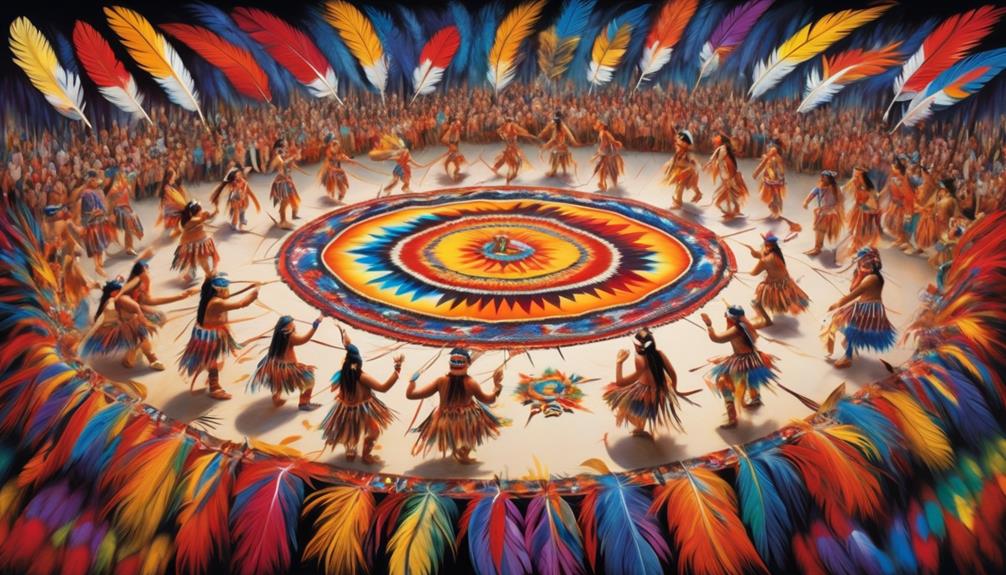
Indigenous communities in Canada joyously celebrate their rich cultural heritage through a variety of traditional ceremonies and festivities. These cultural traditions are deeply rooted in the history of the Indigenous peoples and play a vital role in preserving their identity and connection to the land. Festive gatherings provide an opportunity for community members to come together, share stories, perform traditional dances, partake in traditional foods, and honor their ancestors. These celebrations are not only a time for joy and merriment but also serve as a way to pass down customs and teachings to the younger generations, ensuring the continuity of their cultural practices for years to come.
—
| Cultural Celebration | Description | Significance |
|---|---|---|
| Powwows | Traditional dance competitions, drumming, and singing | Celebrating heritage, fostering community spirit |
| Potlatches | Elaborate feasts, ceremonies, and gift-giving | Transmitting cultural knowledge, social bonding |
| Sun Dance | Ceremonial dance to honor the Creator and seek vision | Renewal of spiritual and cultural connections |
—
It's important to recognize the significance of these cultural celebrations in the lives of Indigenous peoples. They are not just events but rather integral parts of their cultural identity, resilience, and resistance. By actively participating and supporting these celebrations, we can contribute to the preservation and revitalization of Indigenous cultures while also fostering mutual understanding and respect.
Contemporary Challenges
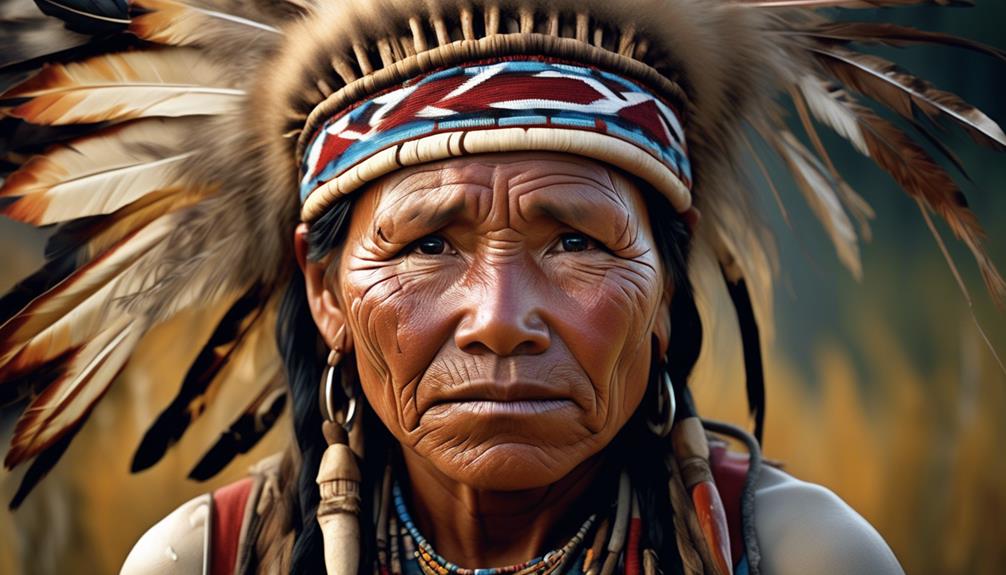
Navigating the rich cultural celebrations of Indigenous communities, we encounter contemporary challenges that demand our attention and understanding. These challenges are deeply rooted in historical trauma and ongoing systemic oppression, and addressing them requires a commitment to community support and mental health awareness.
- Community Support
- *Intersecting Issues*: Indigenous communities face a multitude of intersecting issues, including poverty, inadequate housing, substance abuse, and limited access to healthcare. These issues are often exacerbated by the intergenerational trauma resulting from colonialism and the residential school system.
- *Empowerment Initiatives*: Empowering Indigenous communities through culturally relevant programs and initiatives is crucial. This includes supporting economic development, land sovereignty, and educational opportunities that honor traditional knowledge and practices.
- Mental Health Awareness
- *Healing Practices*: Traditional healing practices and culturally sensitive mental health services are essential for addressing the intergenerational trauma and its impact on mental well-being within Indigenous communities.
- *Destigmatization Efforts*: Challenging the stigma surrounding mental health in Indigenous communities is vital. Providing safe spaces for open dialogue, promoting culturally informed counseling, and integrating traditional healing practices into mental health care can help in this regard.
As allies, it's our responsibility to actively listen, learn, and advocate for the necessary resources and support systems that Indigenous communities require. By centering community support and mental health awareness in our efforts, we can contribute to the liberation and empowerment of Indigenous peoples in Canada.
Health and Well-being
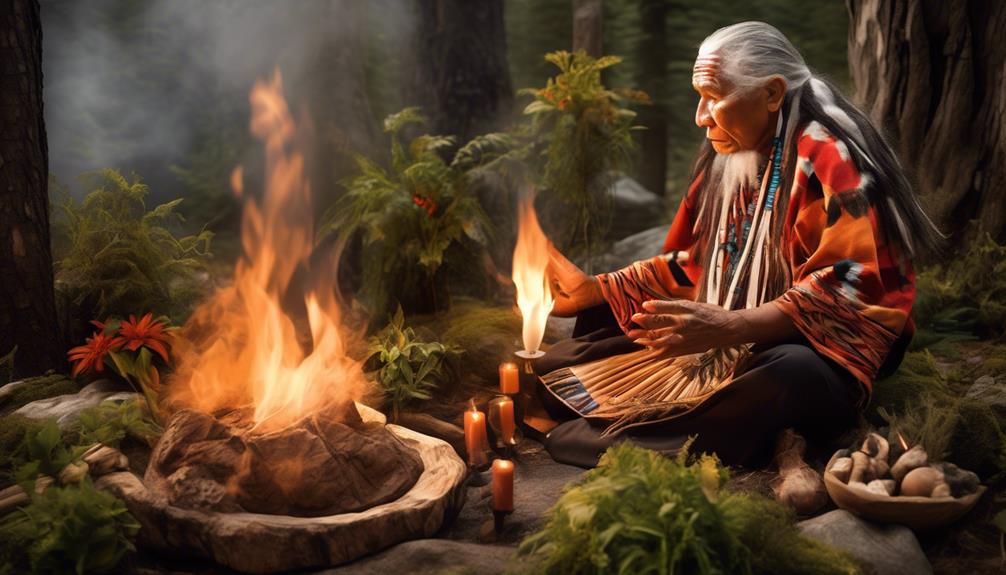
As we explore the health and well-being of Indigenous people in Canada, it's essential to consider the challenges they face in accessing healthcare and the importance of traditional healing practices.
Our discussion will center on the disparities in healthcare resources and services, as well as the resilience and wisdom embedded within Indigenous healing traditions.
These points shed light on the diverse and complex landscape of Indigenous health, reflecting both the barriers and the strengths within their communities.
Access to Healthcare
Access to healthcare for Indigenous people in Canada remains a critical issue that requires attention and meaningful action.
- Healthcare Disparities in Indigenous Communities
Indigenous communities continue to experience significant healthcare disparities, including higher rates of chronic diseases, mental health challenges, and lower life expectancies compared to non-Indigenous populations. Limited access to culturally safe and appropriate healthcare services further exacerbates these disparities, leading to inadequate treatment and outcomes for Indigenous individuals.
Addressing the access barriers to Indigenous healthcare is crucial in ensuring the well-being of Indigenous communities. By recognizing and addressing the systemic issues contributing to these disparities, we can work towards creating a more equitable and accessible healthcare system that respects the unique needs and perspectives of Indigenous people.
Traditional Healing Practices
Indigenous healing practices play a vital role in addressing the healthcare disparities faced by Indigenous communities in Canada.
Herbal remedies, passed down through generations, are central to traditional healing. These remedies, such as cedar and sage, are used for their medicinal properties and spiritual significance.
Spiritual ceremonies, including smudging and sweat lodges, are also integral to healing, promoting mental, emotional, and physical well-being. These practices are deeply rooted in cultural traditions and are essential for holistic health.
However, the accessibility of these healing practices is often limited due to a lack of recognition and support within the mainstream healthcare system.
To truly address the health needs of Indigenous peoples, it's crucial to respect, preserve, and incorporate traditional healing practices within the broader healthcare framework.
Education and Empowerment

Through culturally relevant education and equitable opportunities, Indigenous communities in Canada can enhance their self-determination and build a strong foundation for empowerment.
- Education Reform
- *Curriculum Enhancement*: By integrating Indigenous knowledge, languages, and history into the education system, we can ensure that Indigenous children see themselves reflected in what they learn. This can promote a sense of pride and belonging, contributing to their overall well-being and academic success.
- *Teacher Training*: It's crucial to provide professional development for educators on culturally responsive teaching methods and the historical and ongoing impacts of colonization. This enables teachers to create inclusive and supportive learning environments that validate Indigenous perspectives and experiences.
Education reform is essential to empowering Indigenous communities across Canada. By reforming the education system to be culturally relevant and inclusive, we can address the historical marginalization and contribute to healing intergenerational trauma. This approach also supports the revitalization of Indigenous languages and traditions, fostering a strong sense of identity and belonging among Indigenous youth.
Additionally, by providing equitable opportunities for higher education and skill development, we can empower Indigenous individuals to pursue their aspirations and contribute to the prosperity of their communities. This holistic approach to education and empowerment is fundamental for the advancement of Indigenous peoples in Canada.
Economic Development
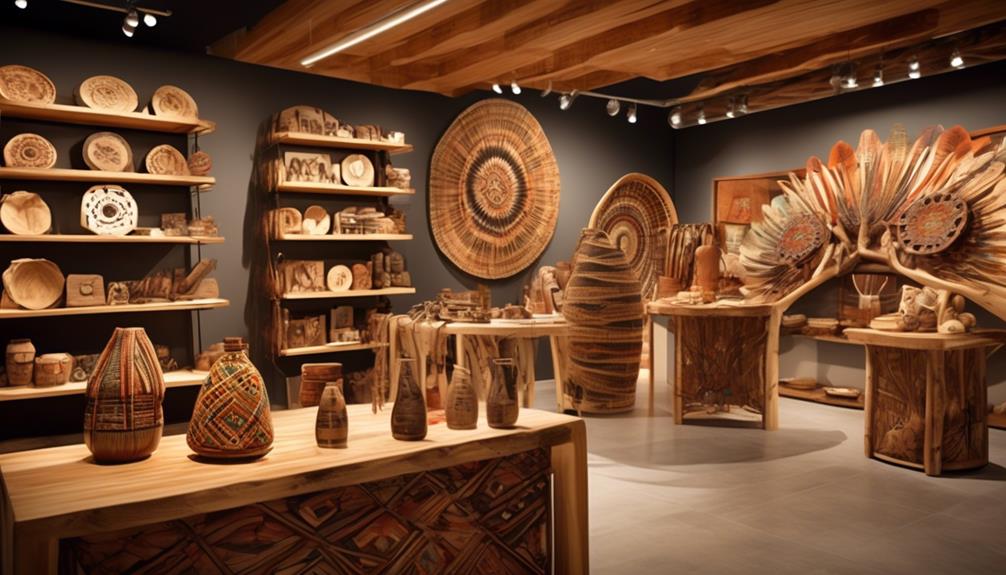
By fostering sustainable economic opportunities, we aim to support the prosperity and self-determination of Indigenous communities in Canada. Economic development is crucial for the advancement of Indigenous peoples and plays a key role in community development. It is our collective responsibility to ensure that economic opportunities are inclusive, respectful of Indigenous rights, and aligned with cultural values.
| Economic Opportunities | Description | Community Impact |
|---|---|---|
| Entrepreneurship | Encouraging and supporting Indigenous entrepreneurs to start and grow businesses. | Empowers individuals to create sustainable livelihoods and fosters economic self-sufficiency within communities. |
| Natural Resource Management | Ensuring Indigenous involvement in the sustainable management of natural resources, such as forestry, fishing, and mining. | Provides economic stability, preserves traditional land use, and promotes environmental stewardship. |
| Tourism Development | Promoting Indigenous tourism experiences and supporting cultural tourism initiatives. | Generates income, preserves cultural heritage, and enhances community pride and well-being. |
| Economic Partnerships | Establishing partnerships between Indigenous communities, government, and private sector for economic development projects. | Fosters economic growth, provides employment opportunities, and facilitates knowledge and skill transfer within communities. |
We recognize that economic development must be approached in a way that respects Indigenous sovereignty, traditional knowledge, and connection to the land. By creating pathways for economic empowerment, we can contribute to the long-term well-being and self-determination of Indigenous communities in Canada.
Art and Expression
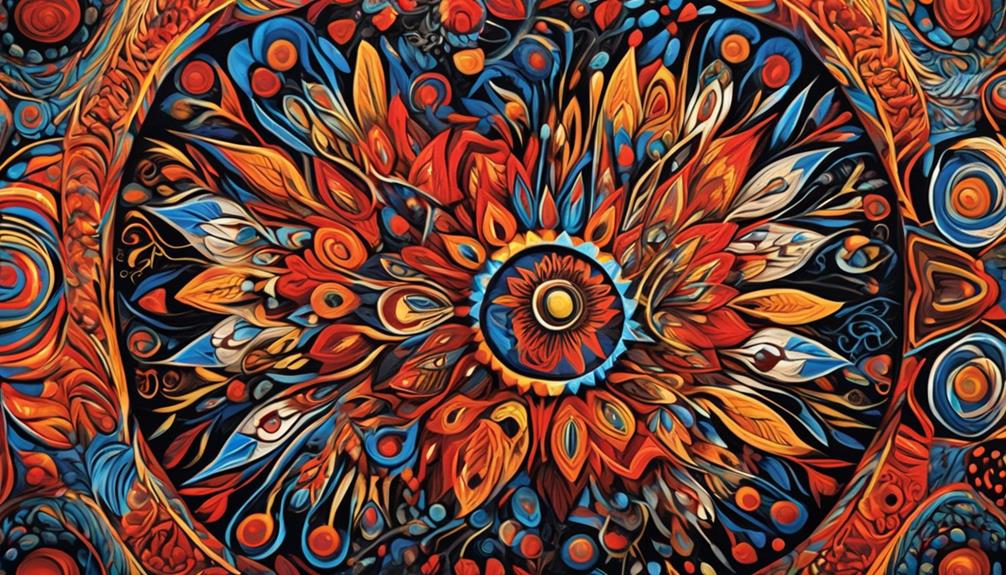
We can't wait to explore the rich and diverse forms of artistic expression within Indigenous communities across Canada. From the cultural symbolism embedded in their art to the preservation of traditional craft techniques, there's so much to learn and appreciate.
Visual storytelling through various art forms is a powerful way for Indigenous people to share their history, experiences, and perspectives with the world.
Cultural Symbolism in Art
Art and expression play a vital role in the cultural symbolism of Indigenous peoples in Canada, embodying the richness and depth of their heritage and traditions.
Symbolic representation
Indigenous art often conveys deep symbolic representations of connection to the land, spirituality, and ancestral knowledge. The use of traditional colors, patterns, and motifs carries profound meanings, reflecting the interconnectedness of all living beings and the natural world.
Artistic expression
Through diverse forms such as beadwork, carvings, quillwork, and textiles, Indigenous artists express their unique perspectives, stories, and experiences. These powerful artistic expressions serve as a bridge between past and present, fostering understanding and appreciation for Indigenous culture and identity.
Traditional Craft Techniques
Using traditional craft techniques, Indigenous artists in Canada skillfully weave together their cultural heritage and artistic expression, creating pieces that embody centuries of wisdom and tradition.
Craft preservation is essential in maintaining the rich cultural heritage of Indigenous communities, as these traditional skills are passed down through generations, embodying the resilience and creativity of Indigenous peoples.
The contemporary relevance of traditional craft techniques is evident in the way artists infuse modern elements into their work while staying true to their roots. By incorporating these traditional skills into contemporary art forms, Indigenous artists keep their cultural heritage alive and thriving.
This fusion of traditional techniques with modern artistic expression not only preserves Indigenous culture but also serves as a powerful means of self-expression and storytelling for Indigenous communities across Canada.
Storytelling Through Visual Art
In exploring the rich tradition of traditional craft techniques among Indigenous artists in Canada, the art of storytelling through visual expression emerges as a vibrant and integral aspect of cultural continuity and self-representation.
Visual storytelling, a cornerstone of Indigenous artistic representation, encapsulates the profound connection to ancestral heritage and the natural world. Through intricate designs and vibrant colors, Indigenous artists convey narratives of resilience, spirituality, and community. This art form serves as a powerful tool for cultural expression, allowing for the preservation and celebration of Indigenous traditions.
Furthermore, visual storytelling provides a platform for reclaiming Indigenous identity and challenging historical misrepresentation. By engaging with the art of Indigenous visual storytelling, we honor the diverse narratives and perspectives that contribute to the rich tapestry of Canadian Indigenous culture.
Political Representation
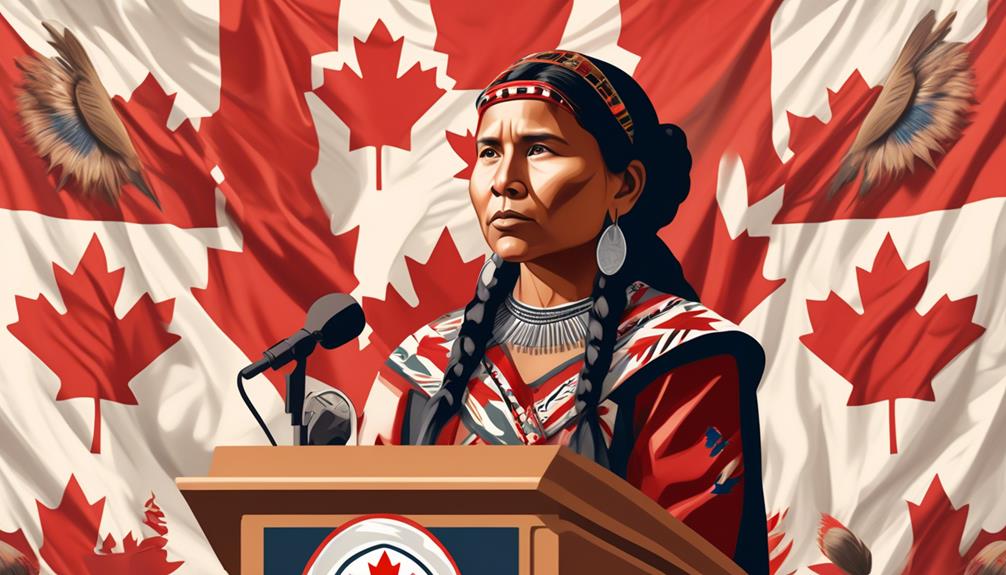
The Indigenous people of Canada are underrepresented in political institutions at all levels of government. This lack of representation hinders our ability to advocate effectively for our communities and address the systemic issues we face. Despite some progress, there's still a significant gap between the number of Indigenous people in the Canadian population and those occupying political offices. It's crucial that our voices aren't only heard but also actively included in the decision-making processes that affect our lives and rights.
Government advocacy is essential for the advancement of Indigenous peoples in Canada. We must work towards increasing the presence of Indigenous leaders in political roles, as they bring unique perspectives and lived experiences to the table. Our communities face complex challenges, including issues related to land rights, education, healthcare, and economic development. Without adequate representation, these crucial matters often go overlooked or misunderstood by non-Indigenous policymakers. Achieving equitable political representation isn't just a matter of diversity; it's about ensuring that our interests and concerns are effectively addressed within the political landscape.
To achieve meaningful progress, it's imperative to actively support and encourage Indigenous individuals to pursue careers in politics. Additionally, non-Indigenous allies must amplify our voices and work towards creating inclusive political spaces where Indigenous perspectives are valued and integrated into policymaking. It's time for our political institutions to reflect the true diversity of Canada and to uphold the principles of justice and equality for all.
Environmental Stewardship

We deeply value traditional land conservation, sustainable resource management, and our cultural respect for nature.
Our ancestors have passed down the knowledge and practices that have allowed us to live in harmony with the land for generations.
It's our responsibility to continue these practices and ensure the well-being of our environment for future generations.
Traditional Land Conservation
Indigenous communities across Canada have long practiced traditional land conservation methods to ensure the environmental stewardship of their territories.
This deep-rooted connection to the land is reflected in our traditional land management, conservation practices, and cultural respect for nature. Our ancestors passed down knowledge of sustainable resource use, fire management, and habitat restoration, fostering community resilience and biodiversity.
With a profound understanding of the interconnectedness of all living beings, we've upheld a harmonious balance between human activity and the natural world. By honoring our cultural respect for nature, we continue to protect and preserve the land for future generations, embodying our commitment to environmental stewardship.
This ongoing dedication to traditional land conservation not only sustains our communities but also contributes to the well-being of the entire planet.
Sustainable Resource Management
Practicing sustainable resource management ensures the long-term well-being of our territories and reflects our commitment to environmental stewardship. By prioritizing environmental sustainability, we engage our communities to collectively conserve and manage our resources for future generations. This approach not only safeguards our lands but also has a positive economic impact, providing sustainable livelihoods for our people. Through community engagement, we foster a deep connection to our ancestral lands, promoting resource conservation and sustainable practices. Our commitment to environmental stewardship is evident in our efforts to balance resource use with preservation. This holistic approach not only benefits our communities but also contributes to the overall well-being of our planet.
| Environmental Sustainability | Community Engagement |
|---|---|
| Resource Conservation | Economic Impact |
Cultural Respect for Nature
Culturally respecting nature and practicing environmental stewardship ensures the long-term well-being of our territories and reflects our commitment to sustainable resource management.
- Nature Conservation
- *Balanced Ecosystem*: Our cultural practices prioritize maintaining a balanced ecosystem, recognizing the interconnectedness between all living beings and the land.
- *Traditional Knowledge*: We pass down traditional knowledge from our ancestors, teaching us to use natural resources responsibly, ensuring their preservation for future generations.
- Environmental Harmony
- *Sacred Connection*: Indigenous beliefs emphasize a sacred connection to the environment, promoting harmony and respect for all elements of nature.
- *Stewardship Responsibility*: We view ourselves as stewards, responsible for protecting and nurturing the land, advocating for environmental sustainability and holistic well-being.
Community Resilience
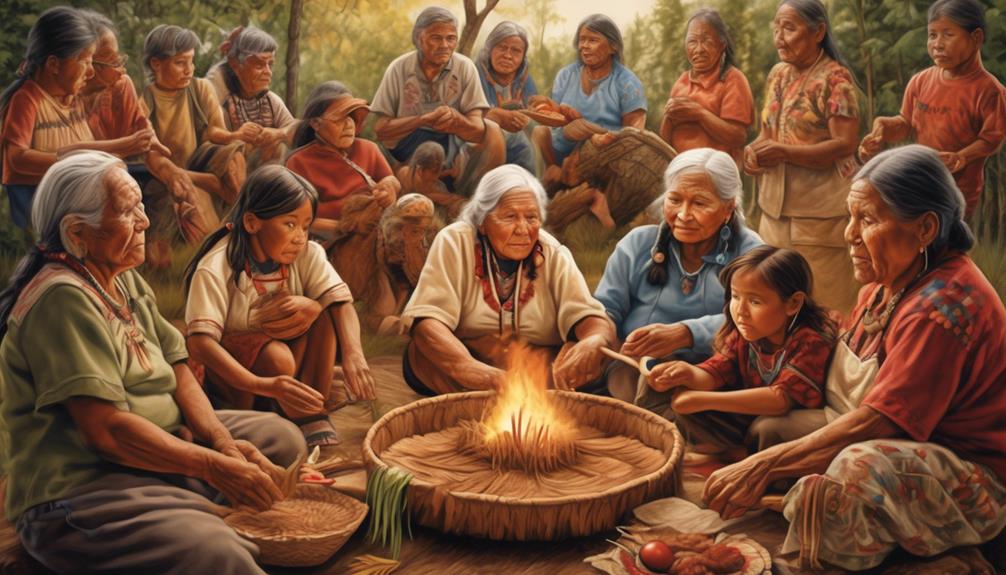
Embracing traditional practices and fostering strong community connections have been key factors in the resilience of Indigenous peoples in Canada. Our communities have demonstrated remarkable strength in the face of historical trauma and ongoing challenges. Through community empowerment and cultural resilience, we have forged pathways to healing and growth. Our commitment to preserving and revitalizing traditional knowledge, languages, and ceremonies has been instrumental in nurturing a sense of belonging and identity, fostering resilience across generations.
| Strengths | Supportive Community | Cultural Revitalization | Connection to Ancestral Lands | Self-Governance |
|---|---|---|---|---|
| Impact | Our communities provide a safe space for individuals to share experiences, seek guidance, and find solidarity. | Reviving cultural practices and teachings instills pride, identity, and a sense of purpose. | Strengthening ties to ancestral lands fosters a deep-rooted connection to our heritage and sustains traditional ways of life. | Self-governance empowers communities to make decisions that align with their cultural values and priorities. |
| Emotion | Belonging, Support, Unity | Pride, Identity, Purpose | Connection, Heritage, Tradition | Empowerment, Autonomy, Integrity |
Our interconnectedness within the community and the restoration of cultural values have provided a source of strength, resilience, and hope. As we continue to navigate the complexities of modern society, these foundational elements will remain pivotal in sustaining our collective well-being and prosperity.
Reconciliation Efforts
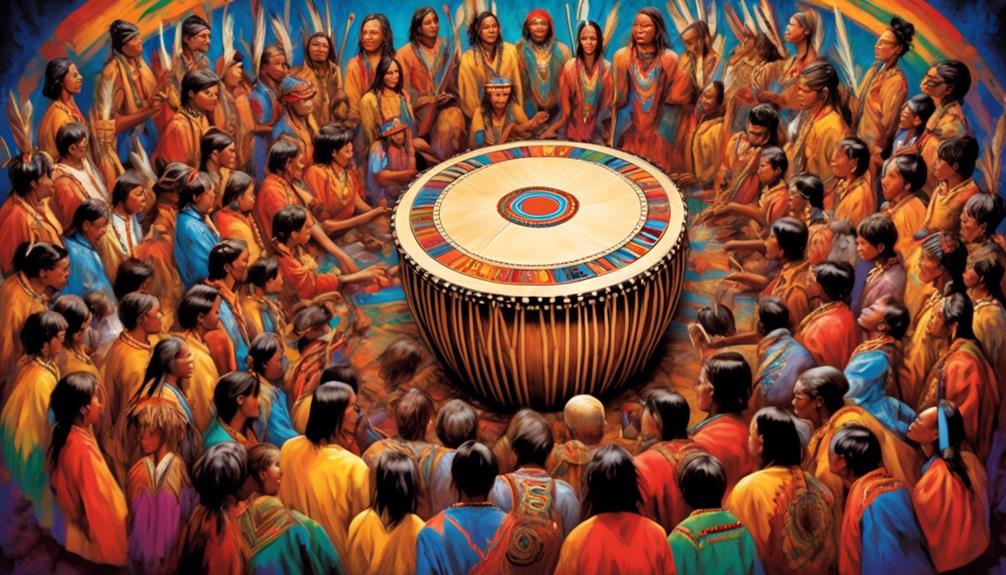
In our efforts toward reconciliation, we prioritize meaningful dialogue and understanding as we work to heal historical wounds and forge a path forward together.
Through reconciliation workshops, we create safe spaces for open and honest conversations, where both Indigenous and non-Indigenous individuals can share their perspectives, experiences, and hopes for the future. These workshops provide an opportunity for us to listen, learn, and empathize with one another, fostering a sense of unity and solidarity.
As part of our commitment to reconciliation, we recognize the importance of the Truth and Reconciliation Commission's calls to action. By actively engaging with these recommendations, we seek to address the legacy of residential schools, advance Indigenous rights, and promote healing and justice. Through these efforts, we aim to dismantle systemic barriers and create a more equitable society for all.
Furthermore, we actively engage with government policies, advocating for the implementation of measures that uphold Indigenous rights and support the revitalization of Indigenous languages, cultures, and traditions. By collaborating with policymakers and decision-makers, we strive to ensure that the voices and needs of Indigenous communities are heard and respected at every level.
In our journey toward reconciliation, we acknowledge that it requires ongoing commitment, humility, and a willingness to confront uncomfortable truths. Together, we endeavor to build a future where Indigenous and non-Indigenous peoples can coexist harmoniously, with mutual respect and understanding.
Future Perspectives
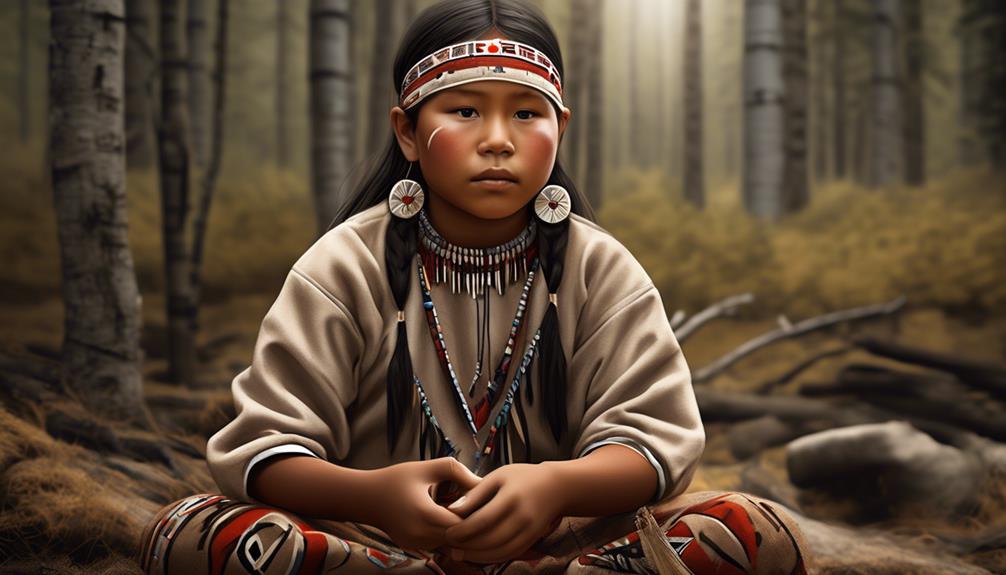
Looking ahead, we're committed to fostering a future where Indigenous and non-Indigenous communities thrive in harmony and mutual respect.
This vision entails creating economic opportunities that benefit Indigenous peoples, promoting educational advancement, and ensuring social justice through community engagement.
Economic opportunities are crucial for the well-being and empowerment of Indigenous communities. We aim to support and facilitate the growth of Indigenous businesses, sustainable development projects, and employment initiatives that honor Indigenous values and traditions.
Additionally, we recognize the significance of educational advancement in addressing the disparities faced by Indigenous youth. Our future perspective involves actively promoting educational opportunities that are culturally sensitive and inclusive, equipping Indigenous youth with the skills and knowledge to pursue their aspirations.
Furthermore, our commitment to future perspectives includes advocating for social justice and fostering community engagement. We strive to work collaboratively with Indigenous communities to address social inequities, promote cultural preservation, and uphold Indigenous rights. This involves actively listening to the needs and aspirations of Indigenous peoples, amplifying their voices, and advocating for policies that promote social justice and equality.
Community engagement is at the heart of our vision for the future, as it's essential for building trusting relationships, fostering understanding, and working together towards a shared future. Our dedication to these principles is rooted in a deep understanding of the importance of mutual respect, collaboration, and solidarity between Indigenous and non-Indigenous communities.
Frequently Asked Questions
What Are the Specific Challenges Faced by Indigenous People in Urban Areas?
In urban areas, indigenous people face specific challenges that affect mental health and economic development. These challenges include discrimination, lack of access to culturally appropriate services, and disconnection from traditional lands and culture. These factors contribute to high rates of poverty and unemployment among indigenous urban populations.
Additionally, the impact of historical trauma and systemic inequalities further exacerbates the struggles faced by indigenous individuals and communities in urban settings.
How Are Indigenous Communities Addressing Issues of Mental Health and Wellness?
We've seen indigenous communities coming together to address mental health support with a blend of traditional and modern approaches.
Cultural healing practices, such as storytelling, drumming, and connection to the land, are being woven into mental wellness initiatives.
It's a beautiful fusion of resilience and wisdom, nurturing emotional well-being.
These efforts honor the profound connection between mental health and cultural identity, fostering a path to healing that resonates deeply within indigenous communities.
What Role Do Indigenous Youth Play in Preserving Traditional Knowledge and Practices?
Youth engagement is crucial in preserving traditional knowledge and practices. They actively participate in cultural events, learning from elders, and passing on these teachings to future generations.
Their enthusiasm and involvement breathe new life into our traditions, ensuring their continuity. Cultural preservation becomes a vibrant, evolving process, enriching our community.
We recognize the value of their contributions and empower them to carry our heritage forward with pride and respect.
How Are Indigenous Communities Leveraging Technology and Innovation for Economic Development?
We understand the importance of technology adoption and economic empowerment in indigenous communities.
Leveraging innovation and technology allows for economic development, fostering self-sufficiency and sustainability.
This opens doors to new opportunities and preserves cultural traditions.
We stand in solidarity with indigenous communities worldwide as they harness these tools to create brighter futures for themselves and their generations to come.
What Are the Key Priorities for Indigenous Communities in Shaping Future Government Policies and Programs?
In shaping future government policies and programs, key priorities for indigenous communities include:
- Community engagement
- Land rights
- Cultural preservation
- Education
It's crucial to ensure that our voices are heard and respected, and that our rights are upheld.
We aim to work collaboratively with the government to create policies that honor our cultural heritage, protect our lands, and provide quality education for our people.
Conclusion
As we look to the future, let's walk together with open hearts and minds, embracing the rich tapestry of Canada's indigenous people.
Let's honor their resilience, celebrate their culture, and support their efforts for reconciliation.
Like the roots of a mighty oak tree, their traditions run deep, anchoring us to the land and reminding us of our shared humanity.
Let's stand in solidarity, nurturing a future where all voices are heard and respected.
